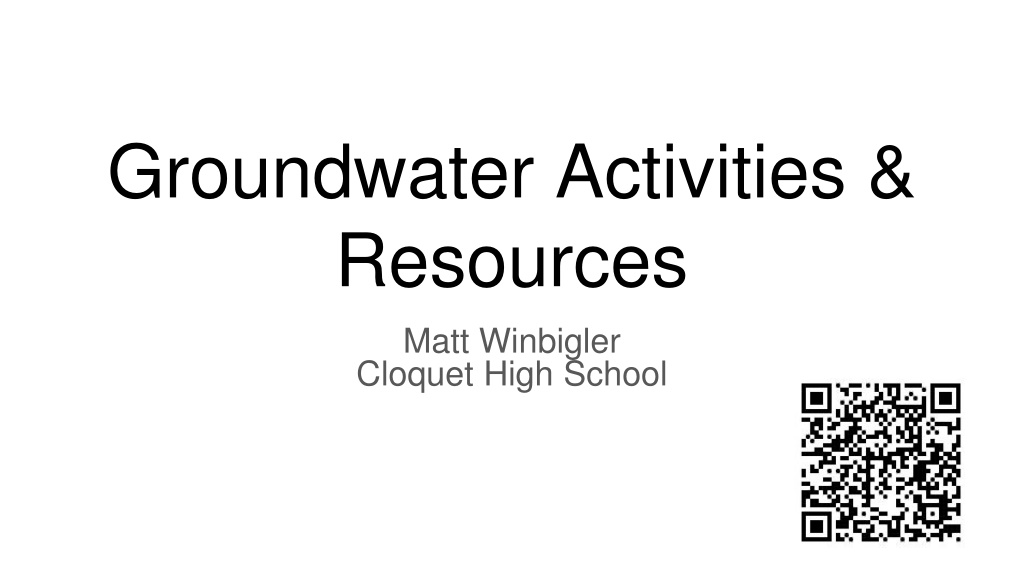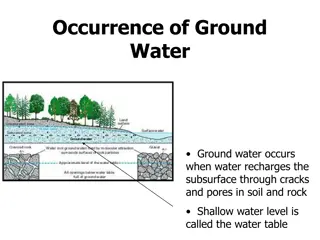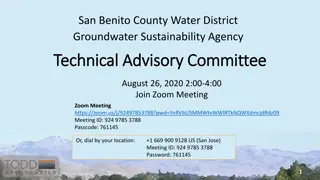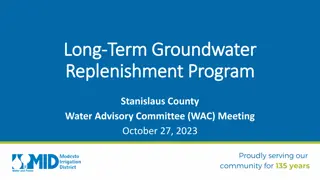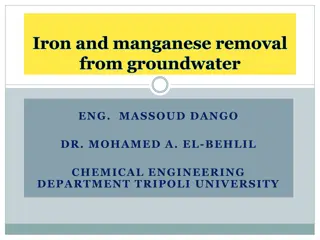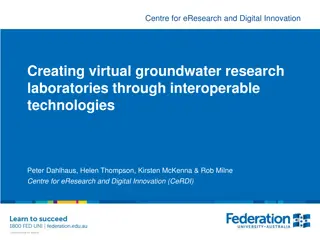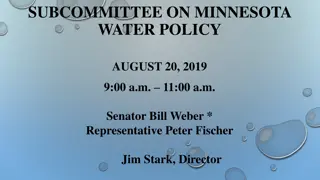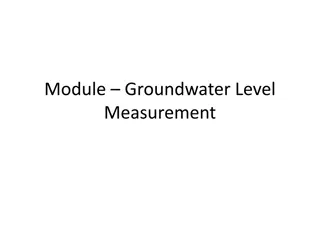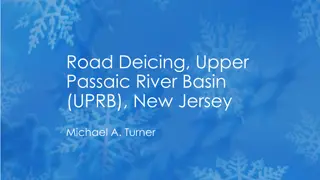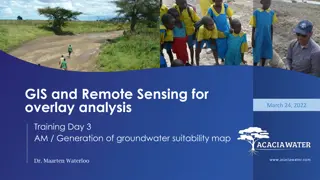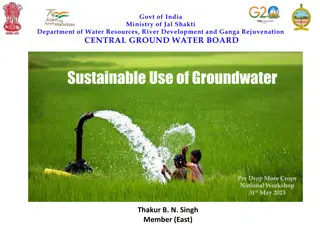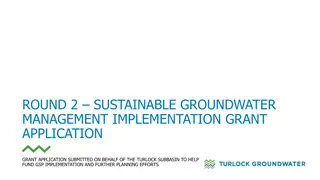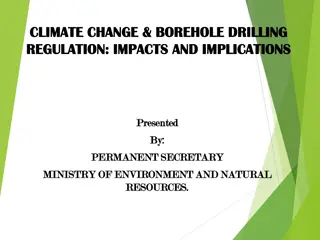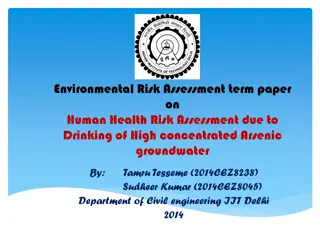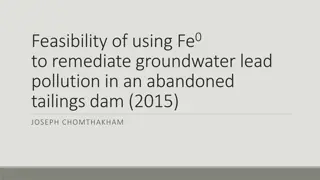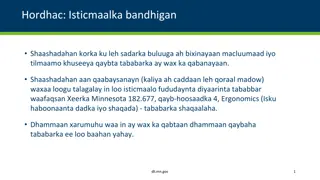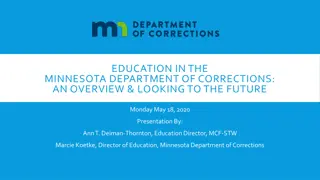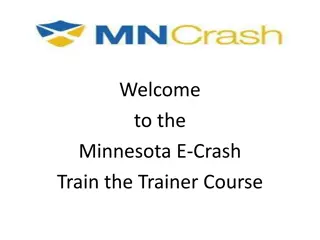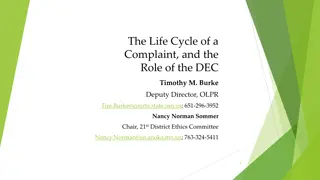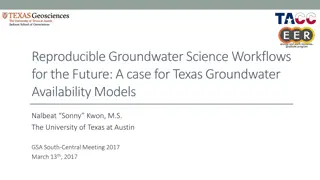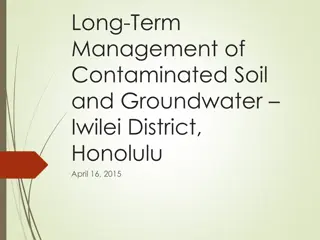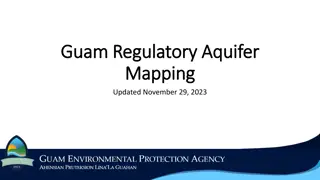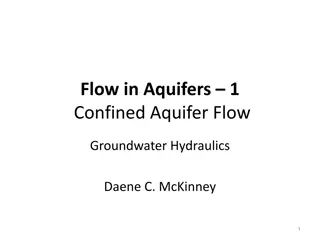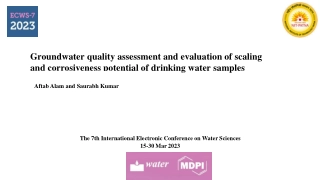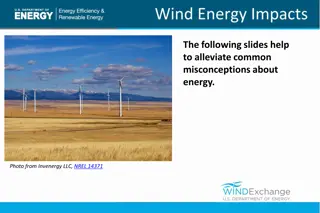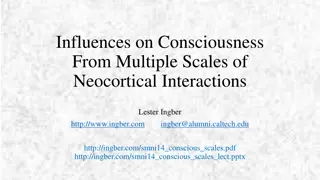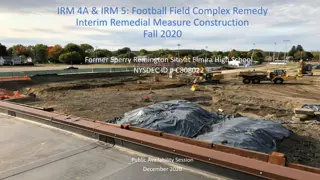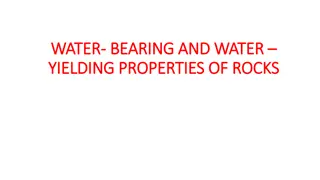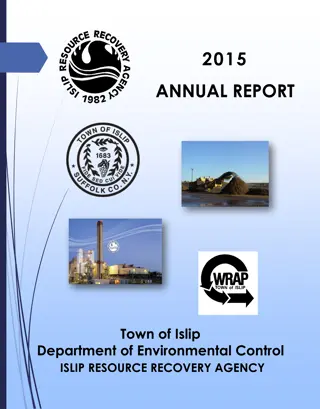Human Impacts on Groundwater Systems in Minnesota: A Study of Interactions and Solutions
Explore the intricate relationships between human activities and groundwater systems in Minnesota through investigations, models, and technological solutions. Utilize place-based evidence, including insights from Minnesota American Indian tribes and cultures, to understand and address climate change impacts on Earth's systems. Evaluate information sources to assess factors influencing the groundwater system, such as porosity, permeability, and human-induced effects like agricultural practices and wetland loss.
Download Presentation

Please find below an Image/Link to download the presentation.
The content on the website is provided AS IS for your information and personal use only. It may not be sold, licensed, or shared on other websites without obtaining consent from the author. Download presentation by click this link. If you encounter any issues during the download, it is possible that the publisher has removed the file from their server.
E N D
Presentation Transcript
Groundwater Activities & Resources Matt Winbigler Cloquet High School
ESS: Human Impacts and Sustainability in Earths Systems 9E.2.2.1.3 Develop or use an algorithmic representation, based on investigations of causes and effects in complex Earth systems, to illustrate the relationships within some part of the Earth system and how human activity might affect those relationships. (P: 5, CC: 4, CI: ESS3, ETS2) Emphasis is on students identifying the interacting components of a system, mathematically modeling how those factors interact and accounting for the effects of human activity on the system. Examples may include local systems in which natural and human-influenced variables impact the amount of runoff. ESS: Human Impacts and Sustainability in Earth s Systems 9E.3.2.2.1 Evaluate or refine a technological solution to reduce the human impacts on a natural system and base the evaluations or refinements on evidence and analysis of pertinent data.* (P: 6, CC: 7, CI: ESS3, ETS1, ETS2) Emphasis is on prioritizing identified criteria and constraints related to social and environmental considerations. Examples of data for the impacts of human activities may include the quantities and types of pollutants released into air or groundwater, changes to biomass and species diversity, or areal changes in land surface use (for surface mining, urban development, or agriculture). Examples for limiting impacts may range from local efforts (such as reducing, reusing, and recycling resources) to large-scale geoengineering design solutions (such as altering global temperatures by making large changes to the atmosphere or ocean). ESS: Human Impacts and Sustainability in Earth s Systems 9E.4.2.2.1 Apply place-based evidence, including those from Minnesota American Indian Tribes and communities and other cultures, to construct an explanation of how a warming climate impacts the hydrosphere, geosphere, biosphere, or atmosphere. (P: 8, CC: 4, CI: ESS3) Examples of cultures may include those within the local context of the learning community and within the context of Minnesota. Emphasis is on understanding and using American Indian knowledge systems to describe regional impacts of climate change to Minnesota. Examples may include the water cycle and how precipitation change over time impacts cultural practices related to nibi ( water in the Ojibwe language); or the decline/species loss of wiigwaas ( paper birch in the Ojibwe language and an important tree in Anishinaabe culture) due to climate stressors like drought or changes in snow cover. ESS: Weather and Climate 9E.4.2.1.1 Compare, integrate and evaluate sources of information in order to determine how specific factors, including human activity, impact the groundwater system of a region. (P: 8, CC: 2, CI: ESS2, ETS2) Emphasis is on the making sense of technical information presented in a variety of formats (graphs, diagrams and words). Example of sources of information may include student experimental data. Examples of factors may include porosity, permeability, sediment or rock type, recharge or discharge factors, and potential energy. Examples of human factors may include usage rates, run-off, agricultural practices, and loss of wetlands.
ESS: Earths Systems and Processes 9E.1.2.1.1 Plan and conduct an investigation of the properties of water and its effects on Earth materials and surface processes. (P: 3, CC: 6, CI: ESS2) Emphasis is on physical and chemical investigations with water and a variety of solid materials to provide the evidence for how processes in the water cycle and rock cycle interact. Examples of physical investigations may include transportation and deposition of various sediment types and sizes, erosion of surfaces with varying amounts of soil moisture content and/or ground cover, or frost wedging by the expansion of water as it freezes. Examples of chemical investigations may include chemical weathering and recrystallization (by testing the solubility of different materials) or melt generation (by examining how water lowers the melting temperature of most solids). Examples specific to Minnesota may include chemical weathering of limestone to create karst topography. ESS: Earth s Systems and Processes 9E.2.1.1.2 Analyze geoscience data to make a claim that one change to the Earth's surface can create feedbacks that cause changes to other Earth systems. (P: 4, CC: 7, CI: ESS2, ETS2) Emphasis is on using data analysis tools and techniques in order to make valid scientific claims. Examples may include climate feedback mechanisms, such as how an increase in greenhouse gases causes a rise in global temperatures that melt glaciers and sea ice, which reduces the amount of sunlight reflected from the Earth's surface (albedo), increasing surface temperatures and further reducing the amount of ice. Examples may also be taken from other system interactions, such as how the loss of ground vegetation causes an increase in water runoff and soil erosion; how dammed rivers increase groundwater recharge, decrease sediment transport, and increase coastal erosion; or how the loss of wetlands causes a decrease in local humidity that further reduces the wetland extent and longevity. ESS: Human Impacts and Sustainability in Earth s Systems 9E.1.2.1.2 Plan and conduct an investigation of the properties of soils to model the effects of human activity on soil resources. (P: 3, CC: 2, CI: ESS3, ETS2) Emphasis is on identifying variables to test, developing a workable experimental design, and identifying limitations of the data. Examples of variables may include soil type and composition (particularly those found in Minnesota), erosion rate, water infiltration rates, nutrient profiles, soil conservation practices, or specific crop requirements. ESS: Human Impacts and Sustainability in Earth s Systems 9E.2.1.1.3 Analyze geoscience data and the results from global climate models to make an evidence-based forecast of the current rate of global or regional climate change and associated future impacts to Earth's systems and human infrastructure.* (P: 4, CC: 7, ESS3, ETS1) Examples of evidence (for both data and climate model outputs) may include precipitation and temperature and their associated impacts on sea level, glacial ice volumes, and atmosphere and ocean composition. Engineering examples may include using climate change data (rising sea levels) to evaluate the impact on the ability of the sewer system to handle runoff or of existing wells to produce potable water.
Surface & Groundwater Movement NOTES Groundwater Story Line Unit Driving Question: How does water move below Earth s surface?
RESOURCES: Groundwater Movement Quizlet >>>USGS National Water Dashboard Water Balance App: Living Atlas >>>>CONCORD High-Adventure Science: Will there be enough fresh water? What s in My Neighborhood? MNPCA EnviroAtlas Map Household Water Calculator SE MN Groundwater (MDA) Accessing Minnesota s Geological Data Exploring Earth Systems HUB Porosity and Permeability: EdPuzzle How Groundwater Moves in Southeast Minnesota [Part 1]: EdPuzzle
ACTIVITIES Water & Wastewater Map Rivers: Watershed Analysis (Geoinquiry) Water Movement Lab: Virtual Well Placement: Concord Water Movement Through the Ground Lab Human Impact on Land Water Footprints Slides Discussion Water Flows Together (video) Stream Table Lab Nogales River Case Study Explorers at Work Science in the News Groundwater Movement Modeling Cross Section Brainstorm Jamboard Breakout Teams Template
